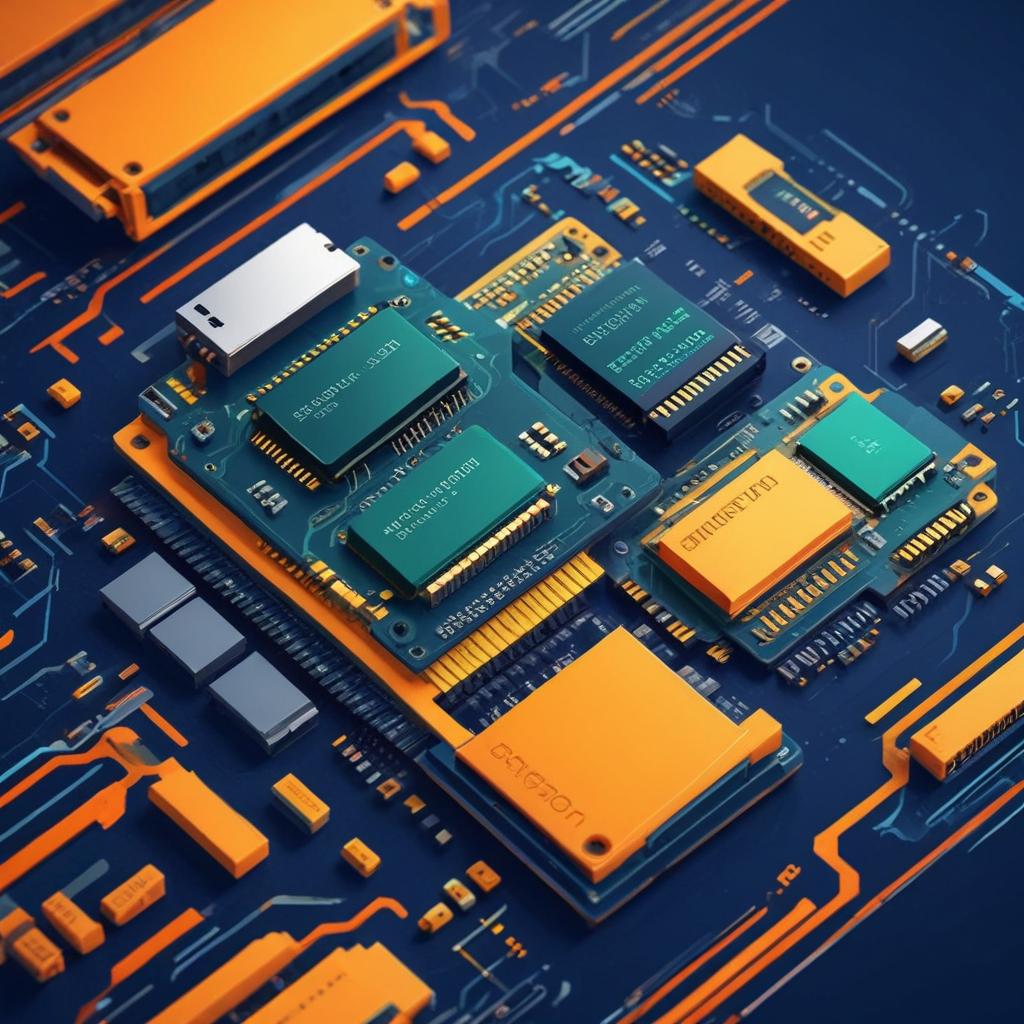Exploring the Dynamics of the Memory Modules and Solid-State Drives Market: Growth and Challenges Ahead

The Memory Modules and Solid-State Drives (SSD) market is experiencing a significant upswing, projected to reach a staggering USD 108.8 billion by 2032, propelled by a remarkable 11.1% compound annual growth rate (CAGR) from USD 43.3 billion in 2022. This growth narrative is heavily influenced by the pressing demand for enhanced data storage solutions, particularly in the aftermath of the COVID-19 pandemic, which propelled digital transformation into overdrive. With SSDs taking center stage due to their speed and efficiency, it’s crucial to dig deeper into the various dimensions affecting this market.
Tactical Positives and Long-Term Impacts
- Consumer Electronics Driving Demand: The consumer electronics sector commands a hefty 45% share of the market, with devices such as gaming consoles and smartphones being primary contributors to this growth.
- Technological Advancements: The embrace of PCIe interfaces in SSDs has heightened performance, allowing for faster data access, which appeals not just to individual users but to businesses dependent on speed.
- Expanding Market Reach: The Asia-Pacific region stands poised for the most robust growth due to ongoing digital infrastructure developments and competitive manufacturing costs.
These aspects of market growth hold promise not just for immediate returns, but for fostering innovation, enhancing user experience, and driving future technological developments across numerous sectors.
Questioning Underlying Assumptions
While the optimistic projections shine brightly, several assumptions merit closer scrutiny:
- Impact of US Tariffs: Tariffs on key imported components could inflate production costs, raising retail prices and affecting consumer demand, particularly in cost-sensitive markets.
- Dependency on Imported Components: The reliance on international suppliers may hinder the growth pace, especially in North America, potentially affecting timely product launches.
Why is it crucial to consider these factors? Ignoring the complex dynamics could paint an incomplete picture of the market’s trajectory. The reliance on high-priced imports could lead consumers to reconsider their options, which in turn could slow down market expansion.
Examining Counterarguments
Adversities in growth present opportunities for reassessment and strategy revision:
- Shifting Production: Companies could pivot towards local production to mitigate tariff impacts, reducing dependency on international suppliers and fostering regional growth.
- Innovation as a Catalyst: Emphasizing innovation in production and the introduction of cutting-edge technology could offset the effects of tariffs, ensuring sustained demand.
Alternative strategies might emerge as manufacturers find creative solutions to adapt to changing market conditions. Embracing local production could not only alleviate price pressures but also enhance overall market resilience.
Broader Perspectives and Final Thoughts
The outlook for the Memory Modules and SSD market remains cautiously optimistic. While several hurdles lie ahead, innovation and strategic adaptation could lead to a redefined market landscape. If history has taught us anything, it’s that markets evolve, and challenges spur creativity and innovation. Is this moment of disruption a catalyst for something even bigger in the world of technology?
At DiskInternals, we specialize in data recovery software for both virtual and physical environments. Our experience uniquely positions us to recognize the implications of data loss and to assist businesses and individuals in making informed decisions to safeguard their information. Our tools aim to empower users, enabling them to navigate the complexities of data management, ensuring peace of mind amidst these market dynamics.